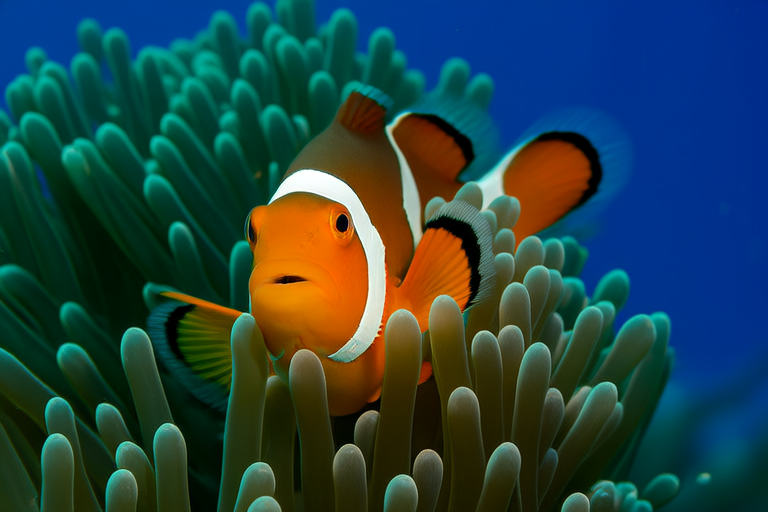The Captivating World of Clownfish: From Ocean Depths to Popular Culture
Clownfish, with their vibrant colors and intriguing behaviors, have long captivated audiences. Their unique characteristics, striking appearance, and significant roles within marine ecosystems make them a favorite subject for both scientists and enthusiasts alike. This article explores the reasons behind their popularity, delving into their behavior, symbiotic relationships, resilience, cultural impact, and ecological significance.
Unique Behaviors
One of the most fascinating aspects of clownfish is their complex social structure. They live in groups within a single anemone, where they exhibit a strict hierarchy. The largest female is at the top, followed by the largest male, and then smaller males. This arrangement ensures that the dominant pair can reproduce while preventing any subordinate from taking over.
Clownfish also engage in remarkable parenting behaviors. Both parents care for their eggs, which they lay on coral or rock near their host anemone. The male guards the eggs, fanning them with his fins to provide oxygen and protect them from predators. After about six to ten days, the eggs hatch, releasing tiny, transparent larvae that drift in the ocean currents for several weeks before settling on a suitable habitat.
Striking Appearance
Clownfish are known for their bright orange bodies adorned with white stripes. However, not all clownfish species share this exact coloration; some have varying shades of yellow, red, or even black. These vivid hues serve as a warning to potential predators, signaling that the fish is toxic due to its relationship with the anemone. Additionally, their distinct patterns help them blend into their environment, providing camouflage against larger, more dangerous creatures.
Symbiotic Relationships with Anemones
The most famous feature of clownfish is their close association with sea anemones. This partnership benefits both parties involved. The anemone provides shelter and protection for the clownfish, while the clownfish helps keep the anemone clean by removing parasites and excess algae. Furthermore, clownfish may attract other small fish to the anemone, increasing its food supply.
Scientists believe that clownfish have developed a special mucus layer on their skin that allows them to avoid being stung by the anemone’s tentacles. This adaptation enables clownfish to move freely among the tentacles without harm. Researchers continue to study how this protective coating develops and how it might be used to understand other interactions between organisms.
Resilience in Challenging Environments
Despite facing numerous threats such as pollution, climate change, and overfishing, clownfish populations remain relatively stable. Their ability to adapt to changing conditions contributes to their resilience. For instance, clownfish can adjust their reproductive strategies based on environmental factors like temperature and availability of suitable habitats.
In addition, clownfish have demonstrated remarkable recovery capabilities following disturbances in their ecosystems. Studies have shown that after severe coral bleaching events, clownfish populations rebounded faster than expected due to their flexible behavior patterns and strong ties to their hosts.
Popular Culture Impact
The release of Disney-Pixar’s animated film Finding Nemo in 2003 brought clownfish into mainstream consciousness. The movie’s storyline follows Marlin, a clownfish father, as he searches for his son Nemo who was captured by divers. While Finding Nemo has been criticized for inaccuracies regarding clownfish biology and behavior, it succeeded in sparking interest in these animals and raising awareness about ocean conservation.
Following the success of Finding Nemo, a sequel titled Finding Dory was released in 2016, further cementing clownfish as beloved characters in popular culture. These films have inspired countless fans to learn more about clownfish and support efforts aimed at protecting marine life.
Role in Marine Ecosystems
Clownfish play important roles within their ecosystems by maintaining balance through their interactions with various species. As mentioned earlier, they contribute to the health of their host anemones by cleaning them and attracting additional prey items. Moreover, clownfish serve as prey for larger predators, forming part of the food chain.
Research suggests that clownfish populations may act as indicators of overall reef health. When clownfish numbers decline, it could signal broader issues affecting the ecosystem, prompting conservationists to investigate potential causes and implement appropriate measures.
Conclusion
From their colorful appearances to their unique behaviors and vital roles within marine ecosystems, clownfish offer endless fascination for those interested in nature. Their resilience in the face of adversity and prominence in popular culture make them powerful ambassadors for ocean conservation. By understanding and appreciating these remarkable creatures, we can work together to ensure their survival and preserve the rich biodiversity of our oceans.
